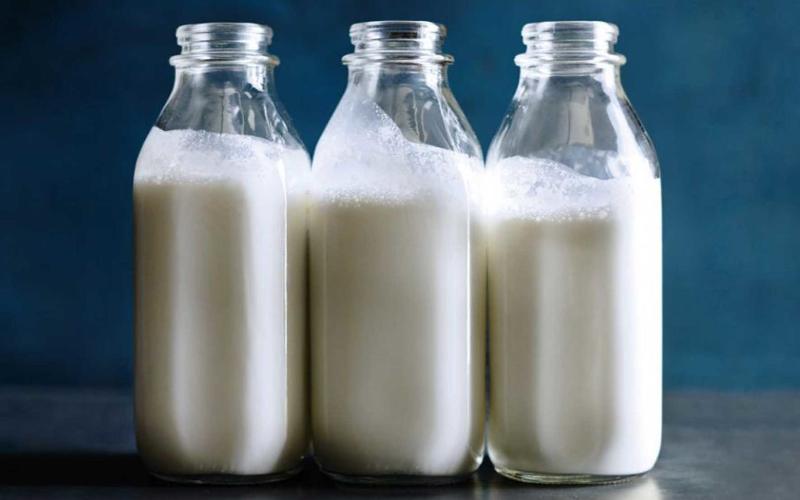Global Dairy Market Faces Challenges: Slow Price Recovery and Modest Demand Amid Inflationary Pressures
Sourse: The DairyNews
Rabobank's latest global dairy quarterly report reveals that the anticipated recovery in dairy market prices is progressing more slowly than expected, with the initial price increases in late 2023 and early 2024 attributed to lower prices and restocking rather than a genuine uptick in consumer demand.

The report also highlights a slowdown in purchasing as buyers wait for the seasonal peak in milk production in the Northern Hemisphere.
Milk supply growth remains limited, with projections showing only modest increases into the latter half of 2024. "For Europe, we expect year-on-year growth of just 0.2% in Q3 and 1% in Q4," the report specifies. In the US, farmgate margins are improving compared to the previous year, which is likely to boost milk production per cow in the second half of 2024.
In New Zealand, if weather conditions permit, a moderately stronger production increase is expected in the second half of the year. Similarly, South American producers are poised for higher margins following the end of El Niño, benefiting from lower feed prices and rising farmgate milk prices.
Despite these regional variations, high inflation and interest rates continue to exert pressure on global consumer spending and purchasing power, particularly affecting dairy demand. In the US, however, there is an expected increase in consumer purchases due to lower dairy prices, with the dairy product Consumer Price Index (CPI) showing a 1.6% decrease year-over-year in March.
The report also addresses the minimal impact of the recent US bird flu outbreak on milk production and dairy demand, noting that the overall spread and severity of the virus remain uncertain.
Regarding interest rates, the lack of cuts could indirectly benefit farmers and dairy processors by improving credit affordability, albeit temporarily. Global demand for cheese and butter remains strong, but exports of skim milk powder are underperforming, largely due to decreased demand from China.
In the EU, exports dropped 4.7% in February year-on-year, influenced by stronger domestic prices and lower stocks. In contrast, the US saw improvements in dairy exports in February, led by cheese, nonfat dry milk, and whey powder, thanks to competitive pricing that supported record-high monthly volumes.
This comprehensive analysis by Rabobank indicates that while the global dairy market faces several challenges, including subdued consumer demand and regional variations in milk supply and pricing, there are also opportunities for growth, particularly in the cheese and butter segments.
Pic by freepik
Milk supply growth remains limited, with projections showing only modest increases into the latter half of 2024. "For Europe, we expect year-on-year growth of just 0.2% in Q3 and 1% in Q4," the report specifies. In the US, farmgate margins are improving compared to the previous year, which is likely to boost milk production per cow in the second half of 2024.
In New Zealand, if weather conditions permit, a moderately stronger production increase is expected in the second half of the year. Similarly, South American producers are poised for higher margins following the end of El Niño, benefiting from lower feed prices and rising farmgate milk prices.
Despite these regional variations, high inflation and interest rates continue to exert pressure on global consumer spending and purchasing power, particularly affecting dairy demand. In the US, however, there is an expected increase in consumer purchases due to lower dairy prices, with the dairy product Consumer Price Index (CPI) showing a 1.6% decrease year-over-year in March.
The report also addresses the minimal impact of the recent US bird flu outbreak on milk production and dairy demand, noting that the overall spread and severity of the virus remain uncertain.
Regarding interest rates, the lack of cuts could indirectly benefit farmers and dairy processors by improving credit affordability, albeit temporarily. Global demand for cheese and butter remains strong, but exports of skim milk powder are underperforming, largely due to decreased demand from China.
In the EU, exports dropped 4.7% in February year-on-year, influenced by stronger domestic prices and lower stocks. In contrast, the US saw improvements in dairy exports in February, led by cheese, nonfat dry milk, and whey powder, thanks to competitive pricing that supported record-high monthly volumes.
This comprehensive analysis by Rabobank indicates that while the global dairy market faces several challenges, including subdued consumer demand and regional variations in milk supply and pricing, there are also opportunities for growth, particularly in the cheese and butter segments.
Pic by freepik
Key News of the Week














